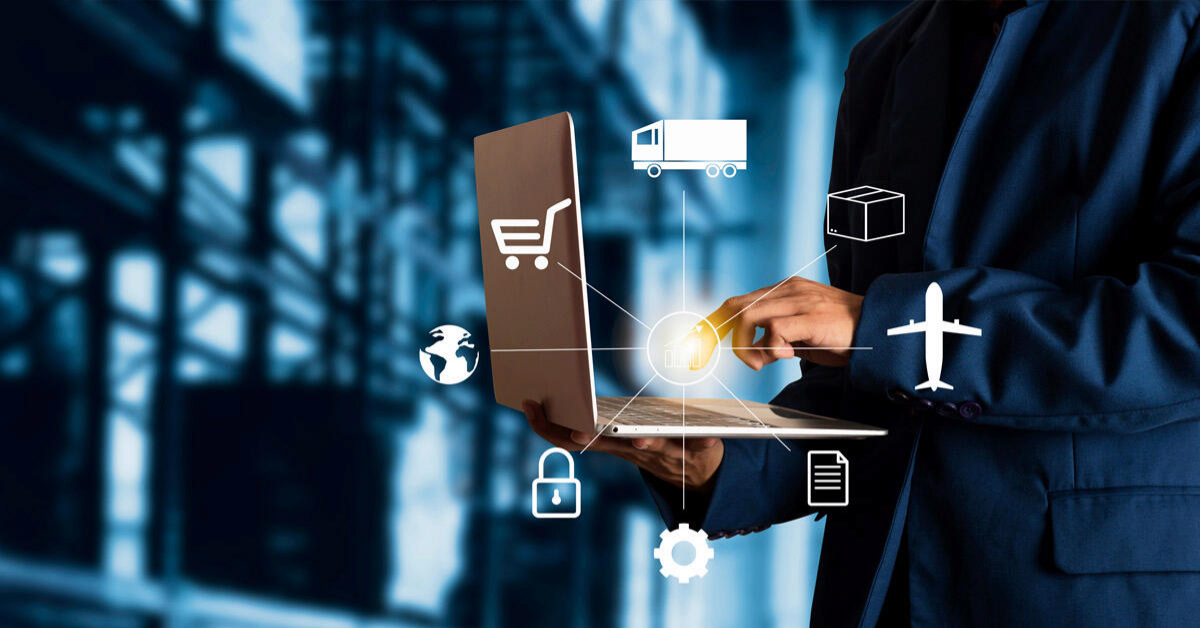Shipping laptops from the United States to Australia isn’t as simple as dropping a package in the mail. Between import duty, goods and services tax (GST), and regulations on lithium batteries, businesses must navigate a complex process to ensure smooth delivery.
Choosing the right shipping service and packaging method—like using double boxing and bubble wrap—can prevent damage and delays.
Plus, understanding shipping costs, transit times, and customs fees will help avoid unexpected expenses.
In this guide, we’ll break down everything you need to know about international shipping for laptops. Let’s dive in!
Understanding regulations for corporate laptop shipping
Shipping laptops internationally requires compliance with specific regulations to avoid delays, fines, or confiscation. When shipping to Australia, businesses need to consider customs requirements, import duties, and restrictions related to electronic devices.
Customs regulations in Australia
Australia has strict customs regulations for importing electronic devices, especially those containing lithium batteries. Businesses must declare shipments of laptops accurately and ensure compliance with Australian safety standards.
Key points to keep in mind:
- Laptops are classified as dangerous goods due to their lithium batteries. They must meet packaging and labeling requirements to prevent rejection by the carrier.
- Australian Border Force (ABF) requires businesses to provide a commercial invoice and import declaration for shipments above AUD 1,000.
- Failure to comply with regulations can lead to delays, penalties, or even the return of the shipment.
Duties and taxes in Australia
When importing laptops into Australia, businesses must factor in additional costs beyond shipping fees.
- Goods and services tax (GST): A 10% GST applies to most imported goods, including laptops, if the total shipment value exceeds AUD 1,000.
- Import duty: Laptops generally have a 0% import duty, but other accessories in the shipment may be subject to tariffs.
- Import processing charge: Depending on the shipment value, businesses may need to pay a processing fee, ranging from AUD 50 to AUD 190.
To avoid unexpected costs, businesses should calculate duties and taxes in advance and check Australian Border Force regulations for updated rates.
Restricted items
While laptops themselves are not restricted, some components or accompanying items may require additional approval:
- High-capacity lithium batteries may be subject to stricter shipping regulations.
- Encrypted software on corporate laptops could require clearance, depending on the sensitivity of the data.
- Refurbished or used laptops may require additional certification or inspection.
Verifying that all items in the shipment meet Australian import regulations ensures a smoother customs clearance process.
Cost of shipping laptops to Australia for businesses
Shipping costs can vary depending on the carrier, shipping speed, and package weight. Here’s what businesses need to consider when budgeting for laptop shipments.

Courier fees
Different couriers offer various shipping options based on speed and service level. The cost to ship a standard laptop (around 5 lbs) from the US to Australia typically falls within these ranges:
- Express shipping (2-5 days): $70 – $120 via FedEx, UPS, or DHL
- Economy shipping (6-10 days): $50 – $80 via USPS or standard courier services
- Bulk shipments: Businesses shipping multiple laptops may get discounted rates through corporate shipping agreements
Customs duties and taxes
As mentioned earlier, businesses must factor in GST, import duty, and processing charges when calculating the total cost of shipping.
- A laptop valued at USD 1,500 would incur a 10% GST of AUD 150
- Import duties may apply to accessories like chargers, keyboards, or external monitors
Accurate documentation and proper declaration can help avoid unnecessary customs hold-ups and additional fees.
Packaging and insurance costs
To protect laptops during international shipping, businesses should invest in quality packaging and insurance:
- Double boxing with foam inserts prevents damage in transit.
- Bubble wrap and anti-static packaging protect against shocks and moisture.
- Insurance coverage for high-value shipments ensures protection in case of loss or damage.
Hidden costs to watch for
Unexpected charges can arise if businesses don’t plan ahead. Common hidden costs include:
- Remote area surcharges for deliveries outside major Australian cities
- Customs clearance delays leading to storage fees
- Incorrect documentation causing reprocessing fees
By working with a reliable shipping service and understanding these costs in advance, businesses can minimize expenses and streamline the shipping process.
Step-by-step corporate shipping process
To ensure a smooth and efficient international shipping experience, businesses should follow a structured process when shipping laptops from the United States to Australia.
1. Choose the right shipping service
Selecting a shipping option depends on factors like delivery speed, budget, and tracking requirements. Consider the following:
- Express services (2-5 days): FedEx International Priority, UPS Worldwide Express, DHL Express
- Standard services (6-10 days): USPS Priority Mail International, FedEx International Economy, UPS Worldwide Saver
- Bulk shipments: Freight forwarders offer cost-effective solutions for large corporate orders
Ensure that the chosen shipping provider has experience handling shipments of laptops and meets lithium battery shipping requirements.
2. Package the laptops securely
Proper packaging prevents damage and ensures compliance with dangerous goods regulations. Use these best practices:
- Double boxing the laptop with at least 2 inches of cushioning between the inner and outer box
- Wrapping the device in bubble wrap and placing it in a static-free plastic bag
- Clearly labeling the package if the shipment contains lithium batteries
3. Complete necessary documentation
Shipping laptops internationally requires accurate paperwork, including:
- Commercial invoice – Lists the laptop details, value, and country of origin
- Customs declaration form – Includes information required for Australian customs clearance
- Air waybill – A tracking document provided by the courier
- Battery compliance documentation – Required for lithium battery shipments
Incorrect or missing documents can lead to customs delays and additional charges.
4. Calculate shipping costs and pay duties in advance
To avoid surprises, businesses should estimate their total shipping costs, including:
- Shipping fees based on the selected shipping option
- Import duty and goods and services tax (GST)
- Additional costs like insurance and packaging materials
Some couriers offer prepaid duties and taxes options, allowing businesses to pay upfront and avoid clearance delays.
5. Track and manage delivery
Most major couriers provide tracking updates, but businesses should also:
- Ensure the recipient is available to accept delivery
- Monitor transit times to anticipate potential delays
- Work with a shipping service that offers customs clearance assistance
Choosing the right shipping service
The best shipping option depends on delivery time, cost, and the level of security needed for the shipment. Here’s how to decide:
Courier shipping vs. freight forwarding
- Courier services (FedEx, UPS, DHL) → Best for smaller shipments and urgent deliveries
- Freight forwarders → Ideal for bulk shipments with lower per-unit shipping costs
Comparing major couriers
| Shipping Service | Estimated Transit Time | Cost Range (per laptop) | Key Features |
| FedEx International Priority | 2-4 business days | $80 – $120 | Fastest option with real-time tracking |
| UPS Worldwide Saver | 3-5 business days | $70 – $100 | Reliable tracking, weekend delivery options |
| DHL Express Worldwide | 3-6 business days | $75 – $110 | Competitive rates for business shipments |
| USPS Priority Mail International | 6-10 business days | $50 – $80 | Most affordable, but slower transit times |
Key factors to consider when choosing a shipping service
- Speed vs. cost – Faster shipping comes with a higher price tag
- Tracking and insurance – Essential for high-value shipments
- Customs clearance support – Some services include brokerage assistance
By selecting the right shipping service and preparing shipments correctly, businesses can ensure that their laptops reach Australia safely and on time.
Potential issues and how to avoid them
Shipping laptops from the United States to Australia comes with challenges, from customs delays to damaged shipments. Businesses can minimize risks by proactively addressing these common issues.
1. Customs clearance delays
Issue: Incorrect or missing documentation can cause shipments to be held at customs, leading to unexpected delays and additional fees.
How to avoid it:
- Ensure all required paperwork is complete, including the commercial invoice, customs declaration, and battery compliance forms.
- Work with a shipping service that provides customs brokerage assistance.
- Prepay import duties and goods and services tax (GST) to streamline the clearance process.
2. Shipping restrictions on lithium batteries
Issue: Laptops contain lithium batteries, which are classified as dangerous goods and must meet strict shipping requirements.
How to avoid it:
- Use approved packaging, such as double boxing and proper labeling.
- Follow airline and courier regulations for battery shipments.
- Check with the carrier in advance to ensure compliance with their dangerous goods policies.
3. High shipping costs
Issue: International shipping can be expensive, especially when shipping multiple laptops.
How to avoid it:
- Compare shipping options between carriers to find the best balance of cost and speed.
- Use bulk shipping discounts or work with a freight forwarder for large shipments.
- Optimize packaging to reduce unnecessary weight and avoid dimensional weight pricing.
4. Damaged shipments
Issue: Laptops are fragile, and rough handling during transit can lead to damage.
How to avoid it:
- Use bubble wrap and place laptops in a plastic bag before placing them in a sturdy box.
- Double boxing adds extra protection against impact.
- Consider shipping insurance for high-value shipments.
5. Unexpected fees and hidden costs
Issue: Businesses often overlook additional charges such as customs storage fees, remote delivery surcharges, and reprocessing fees.
How to avoid it:
- Get a detailed shipping quote that includes all potential charges.
- Ship to major Australian cities to avoid remote area surcharges.
- Keep track of customs regulations to prevent costly mistakes.
Simplify laptop shipping to Australia with Esevel
Shipping laptops from the US to Australia requires careful planning, from choosing the right shipping service to understanding customs duties and taxes. Businesses must navigate international shipping regulations, use proper packaging like double boxing and bubble wrap, and prepare for potential delays.
Esevel simplifies this process by handling the entire IT procurement and shipping process for businesses.
- Device procurement and global delivery – Sourcing and shipping IT equipment across 88+ countries
- Device tracking and management – Full visibility and control over corporate IT assets
- Device security – Ensuring compliance with cybersecurity policies and best practices
- Onboarding and offboarding automation – Hassle-free employee IT setup and recovery
- Real-time IT support – 24/5 technical assistance to keep your workforce running smoothly
- Global hardware support – Repair services and loaner devices to minimize downtime
Frequently asked questions (FAQs)
1. What is the best shipping option for sending laptops from the US to Australia?
The best shipping option depends on your budget and urgency. Express services like FedEx International Priority, UPS Worldwide Express, or DHL Express offer fast delivery (2-5 days) but cost more. Economy options like USPS Priority Mail International are more affordable but take longer (6-10 days).
Or if you’re shipping laptops for remote employees or business operations, Esevel can handle device procurement, secure shipping, and IT setup across multiple locations, simplifying the process.
2. Do I need to pay import duty when shipping laptops to Australia?
Laptops generally have a 0% import duty when shipped to Australia. However, businesses must pay a 10% goods and services tax (GST) on shipments valued over AUD 1,000. Additional fees, such as import processing charges, may apply.
3. How should I package a laptop for international shipping?
To protect laptops during international shipping, follow these steps:
- Place the laptop in a plastic bag to prevent moisture damage.
- Wrap it with bubble wrap to cushion against impacts.
- Use double boxing with at least 2 inches of padding between the boxes.
- Label the package properly if it contains lithium batteries to comply with dangerous goods regulations.
4. How long does it take to ship a laptop from the US to Australia?
Transit times vary based on the shipping service:
- Express shipping: 2-5 business days (FedEx, UPS, DHL)
- Economy shipping: 6-10 business days (USPS, standard couriers)
- Bulk freight shipments: 1-3 weeks, depending on the logistics provider
5. How can Esevel help with shipping laptops to Australia?
Esevel offers end-to-end IT management for businesses with distributed teams, including device procurement, global shipping, IT support, and security. Instead of handling international shipping complexities yourself, Esevel ensures your team in Australia gets the right devices, delivered safely and on time—without the hassle of customs, shipping costs, or import duties.







